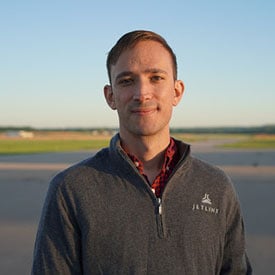Flight training is a complex and demanding process that requires a combination of physical and mental skills. It can be challenging and surprising for those who are new to the experience! But the rewards are incredible, as Hanna describes in her video.
What’s the hardest part of flight training?
Preparing for flight, not the flight itself. Extensive study is required, especially for procedures. Procedures are an essential aspect of preparing for a flight as a student pilot. There are several procedures to follow, including pre-flight checks, takeoff, flight, and landing procedures.
Where do most pilots fail in flight training?
Written exams and oral exams. During an oral exam, the examiner may ask questions about various aspects of flight planning, aircraft systems, regulations, weather, and more. Pilots must demonstrate their proficiency in these areas and provide comprehensive, accurate, and safe responses.
What is flight training like?
A typical week is 3 flying days with 2-4 hours of flight time each day, and 2 days of self-study. Weather is constantly changing, so you’ll find you have to keep your schedule flexible. When the weather clears, you should be jumping at the opportunity to get in an aircraft and fly!
Why is the industry dropout rate 80%?
Lack of connection, community, and mentorship support. The pilot shortage is a mentorship shortage! Having a professional mentor during pilot training is important because you can learn so much from experienced pilots who know the ins and outs of the industry. You need a personal guide to show you the ropes and help you become a better, safer, and more skilled pilot.
Is it hard to learn how to land the aircraft during Private Pilot Training?
Even Neil Armstrong, the first astronaut to land on the moon, had “below average” landing grades early in his Navy training. His grade sheets are in an exhibit at the Naval Aviation Museum in Pensacola, FL. Flight is one of the hardest skills to master, and the learning curve can be steep, but success depends mostly on having a good instructor, not on having "the right stuff"!
Can I work another job on the side during flight training?
Not recommended! Burnout and crew fatigue can affect your safety during training. Instead, get your finances in order before you start flight training. At a minimum, set aside the first 6 months of flight training to be "job free" so you can focus your full attention on learning your new career.
Do I need 20/20 vision and perfect health to become a pilot?
All you need is vision correctable to 20/20. Good health, diet, and fitness aren’t a requirement, but they can really help you get through the long days when you’ll be training in all weather, day and night, and studying hard.
Do I have to be a flight instructor in order to build time and experience for my first airline pilot job?
No, but we recommend this as the fastest way to your dream job. Plus, teaching others builds your own skills. Depending on the airline you want to target, you’ll instruct for as little as 500 (about 5 months) or as much as 1200 hours (12 months). Flight instructors are in high demand all across the U.S.
What can I do now to prepare before I start flying?
You can start studying for the three written exams you’ll take during flight training. In fact, if you’re sure you’re going to finish each rating within a year, you can even take the exams on your own at a local FAA test center!
Is it worth it?
Financially, yes, without a doubt. The financial equation works if you commit to finishing your training in a year, then focus on building time as a flight instructor for a year after that. Remember the value of speed! But for the emotional benefits, the community, and the sense of respect and satisfaction… only you can decide what those are worth.


